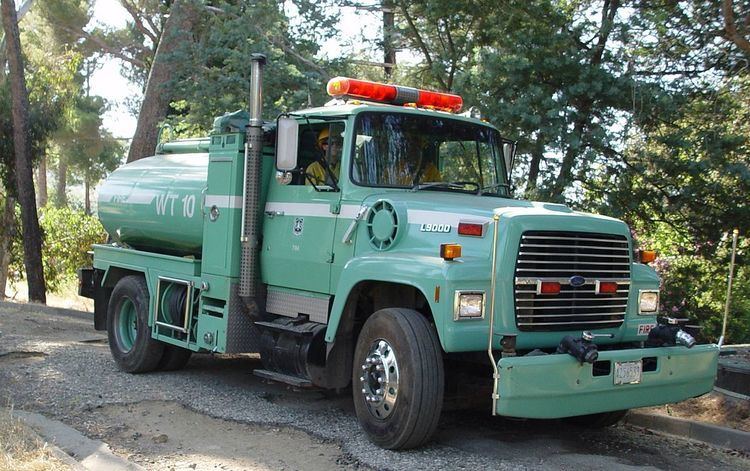 | ||
A wildland fire tender is a specialized vehicle capable of bringing water, foam, or dry chemicals to fire trucks in the field that are engaged on the fireline. These vehicles are specifically designed for fire fighting often with four-wheel drive, rugged suspension and high wheel clearance for mountainous dirt road conditions. According to the National Fire Protection Association, if the apparatus will be used primarily for outdoor and wildland responses, than it is to be considered a wildland fire apparatus and must conform to NFPA 1906.
Contents
Fire tenders are generally equipped with associated fire station equipment including required number of breathing apparatus, first aid kits, telescopic ladders, heat-resisting fiberglass blankets, overall suits, electrically insulated rubber hand gloves, fireman’s axes with insulated handle, fireman’s helmets made of fiberglass, leather belt and pouch for axe, etc.
Often the technique of pump-and-roll is used where the vehicle drives with the pump engaged while a firefighter uses a hose to spray water on the fire. This technique allows a team of two to flank the perimeter of a fire.
Tanker Types
In the fall of 2007, the National Wildfire Coordinating Group agreed on a set of standards for all water tenders that are used for wildland firefighting. The tenders are divided into support tenders and tactical tenders.
NFPA 1906
Additionally, there are requirements laid out by the National Fire Protection Association in NFPA 1906: Standard for Wildland Fire Apparatus. Some of the many details of the NFPA 1906 include:
